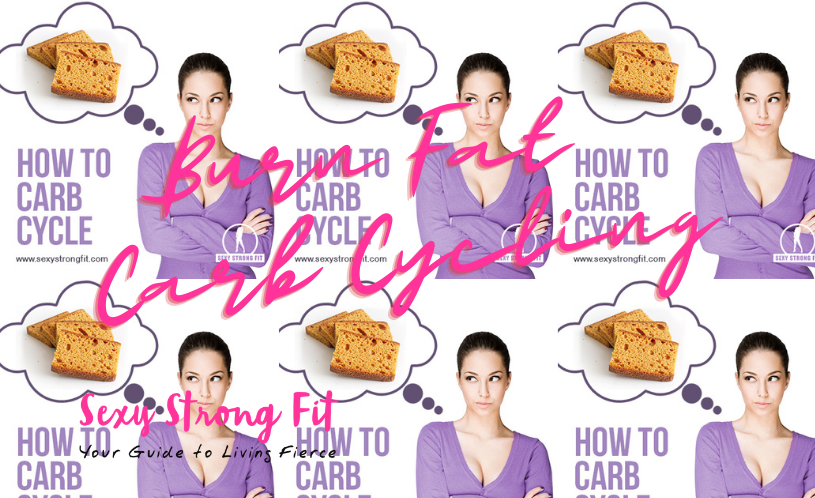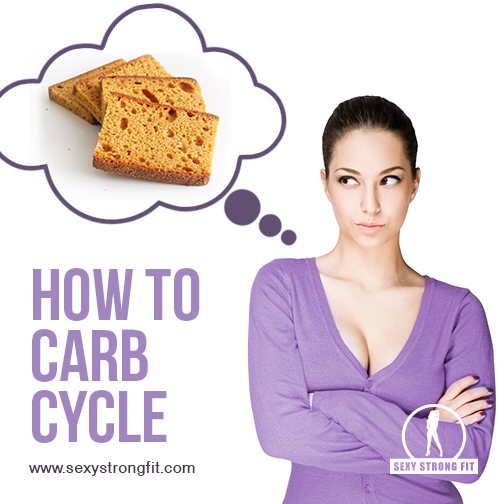What if there was a way to enjoy carbs AND lose weight? There is – it’s called Carb Cycling! If you’re sick of following fad diets and ready to make sustainable weight loss changes, consider using Carb Cycling. Keep reading to learn how to burn fat carb cycling! Plus, learn what the carbohydrate hype is all about, and how to make carbs your friend, not your enemy.
Why Do We Need Carbs?
Carbohydrates are a macronutrient every human needs to ingest. Carbs are the primary source of energy to fuel your brain, daily activities and of course exercise. The ingestion of carbs play a critical role in the bodies ability to maintain blood sugar levels as well as replenishing carbohydrate stores, known as glycogen, needed to prevent fatigue.
So What Is Carb Cycling?
Carb Cycling diet is a diet that switches between low and high amounts of carbohydrates, allowing you to enjoy the benefits of being on a low carbohydrate diet, while also allowing you to still enjoy your favorite carbs too. During low carbohydrate phase your body maximizes the amount of carbs you have stored in muscle glycogen, and seeks out alternative energy sources such as your fat! On high carbohydrate days, you replenish muscle glycogen, but you also stimulate metabolic and anabolic responses that can help prevent diet plateaus.
Making carb cycling work for you is as easy as determining your calories, and your macronutrient ratios that will work for you – low carbohydrate phase of 30 to 20% of your daily calorie needs is sufficient, while protein can make up 30 to 40% and fat can make up the remaining portion. On high carb days, carbs can be shifted to 50%, while protein can remain roughly the same and fat can make up the remaining.
How to Burn Fat Carb Cycle?
In a 7-day period, follow a low carb diet for about 3-4 days. This will cause your body to deplete glycogen stores and tap in to fat reserves as a fuel source. Carb intake should be roughly between 25 g – 50 g on low-carb days. Following the low-carb days, eat a high-carb diet, ingesting between 75 g up to 150 g of carbs. Cycling will avoid dieting plateaus, and will ensure that metabolic hormones stay elevated. Go here for the exact method for Carb Cycling.
Why Is Carb Cycling Better Than Other Diets?
Instead of starving yourself, give your body energy. Carb cycling is the easiest, most effective way to lose weight and keep it off. It fits any lifestyle because you are able to eat the foods that you love (on high-carb days of course). You will feel empowered both physically and mentally, as well as more energetic by carb cycling and not by restricting yourself from the foods that you love.
Optimize carb intake by eliminating sugar, eating plenty of green veggies and non-starchy carbs that are high in fibre. Choosing ‘clean’ and complex carbs such as sweet potatoes, brown rice, and oatmeal will have you losing pounds in no time! And for even better results plan to have your high-carb, lower fat intake for intense workout days.
Still Not Convinced by Carb Cycling? Here’s a Few More Reasons!
Women Lose More Belly Fat On Low Carb Diets
We already know women tend to reserve or hold on to their muscle glycogen – the stored form of carb, which means we need much less to survive! But there really is no need to do an ultra low carb diet either, the key is finding the right macronutrient ratio.
In one study, women on a 1600 calorie restricted high protein diet (30% protein, 40% carb, 30% fat) diet for 8-weeks, experienced not only significant weight loss, but had greater reductions in total and abdominal fat mass than those on a lower protein diet (16% protein, 55% carbohydrates, 26% fat).
Basically, eating a moderate to low carbohydrate diet is sufficient to still lose fat while still gaining muscle! The key is determining how much carb you specifically need based on your activity level and your metabolism.
You Can Eat Carbs Whenever You Like
Carb timing, or nutrient timing really is a thing of the past. Nutrient timing studies showed significant anabolic gains post and pre-exercise with a carb load when participants were truly depleted – in a fasted state.
The truth is most of us never reach a true fasted state – we don’t exercise long enough or at an intensity that can significantly deplete our body. If you ate a few hours before your workout – no matter if it was carbs, protein, or fat, you’re more than likely still experiencing an anabolic response.
One study showed that the anabolic effect of a single meal could last 5 to 6 hours based on the individual’s rate of metabolism. And in another study, it was shown that eating carbs 2 hours post workout resulted in no significant glycogen level differences at 8 hours and 24-hours post workout.
It is more important to provide your body with sufficient nutrients, at regular intervals to help maintain an anabolic state. Going longer than 3 hours between meals may result in nutrient depletion and thus reduce anabolic processes – muscle building! Therefore if you want to eat carbs for breakfast, carbs before bed or carbs after your workout it really doesn’t matter. Your macronutrient ratios are what will ultimately drive your body composition goals, than the exact timing of your nutrient intake.
Bottom Line – You Can Burn Fat Carb Cycling
If your goal is to achieve a muscular, fit body, you will need to eat a high protein diet, with a moderate to low amount of carbs and fat. You can burn fat using Carb Cycling! Flexible dieting and less regimented approaches are more effective, and will keep you on your diet for longer. Pay attention to how your body feels and responds to what you feed it and when you feed it. Make adjustments based on your own unique requirements and needs.
Until Next Time,
Be Fierce & Rule the World,
Lauren Jacobsen
References:
Aragon AA, Schoenfeld BJ. Nutrient timing revisited: is there a post-exercise anabolic window. JISSN. 2013. 10:5.
Parker B, et al. Effect of a High Protein, High Monounsaturated Fat Weight Loss Diet on Glycemic Control and Lipid Levels in Type 2 Diabetes. Diabetes Care. 2002. 25(3): 425-30.










